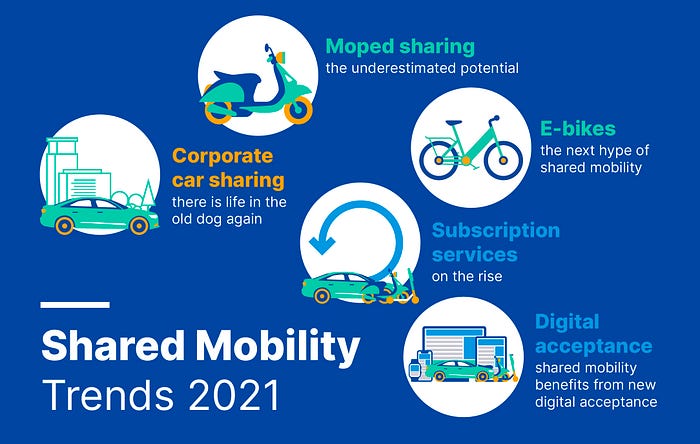Shared Mobility 2021: 5 Trends You Should Keep an Eye On
For the shared mobility industry, as for many others, 2020 was primarily defined by the pandemic. 2021 will be different: The team at Invers expects the shared mobility market to pick up significantly as the pandemic winds down.

Five trends have been identified by the experts at INVERS, the inventor of automated vehicle sharing, that will have a decisive impact on the shared mobility market this year:
1. Subscription services: strongly on the rise
The need for flexible individual mobility is growing, especially due to the pandemic. Customers want to own their own vehicle but prefer not to tie themselves down; they want to rent for short periods with transparent prices and low fixed costs. Car subscriptions close this gap between rental or leasing vehicles and owning a car. There is a lot of momentum in the market: providers such as Cluno and Vive la Car have been around for some time. VW car sharing service WeShare has recently responded: as of recently, customers can purchase monthly cancellable subscriptions and benefit from cheaper rates. Finn.auto founder Max-Josel Meier has been offering a subscription model since last year and has just convinced investors to invest another 20 million euros. Chinese provider Geely has announced its European subscription offering Lynk for 2021.
2. Moped sharing: the underestimated potential
Since 2012, mopeds have been a constant in the sharing market, so far still at an expandable level. Especially in urban areas, user numbers are currently on the rise. According to the latest moped sharing study, the number of shared mopeds worldwide has risen by 58 percent in the past year from 66,000 to 104,000 vehicles today, and the number of registered users has even increased from 5 million to 9 million, i.e. by 80 percent. The vehicles are robust and durable, comfortable and make finding a parking space easy. In addition, providers have not yet tapped into many cities and regions: in the UK, France, Italy, and throughout Eastern Europe, there is still considerable untapped opportunities.
3. E-bikes: the next hype of shared mobility
E-bikes are taking over the streets. Not just since the pandemic, but many cities like Paris and Cologne are converting car lanes into bike lanes. In the next step, they have now reached the shared mobility industry. For example, Lime and FreeNow added e-bike sharing to their program in Hamburg as early as September 2020. In Berlin, Wheels built their own vehicle — a combination of e-scooter and e-bike. At the end of 2020, Dott announced that it will offer e-bike sharing to its customers in London and Paris from March 2021, in addition to its successful scooter sharing services. According to industry insiders, other competitors are already waiting in the wings.
4. Corporate car sharing: there’s life in the old dog again
Recently, the topic of corporate car sharing has been very quiet. This will change in the coming year. The concept will make a powerful comeback to replace traditional corporate leasing. Deutsche Telekom, for example, wants to make fewer individual company cars and more efficient, holistic mobility offerings that also support CO2 targets. Car sharing and shuttle services play a crucial role in this.
5. Digital acceptance: shared mobility benefits from new digital acceptance
Home office, distance learning, online shopping, digital delivery services, coronavirus app — the pandemic has significantly accelerated the acceptance of digital offerings. The shared mobility industry, whose business model is largely digital, is also benefiting from this. This is especially true for customer relations, which take place almost exclusively via smartphone: search, book, unlock — all via app. Cancel, unsubscribe, rate — also via app. The more potential users become accustomed to digital offerings, the more willing they are to reach for their smartphone for mobility as well, in order to flexibly use their scooter, moped, bike, or car.
Originally published on www.invers.com
